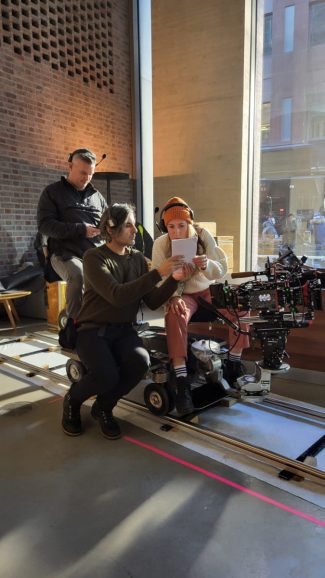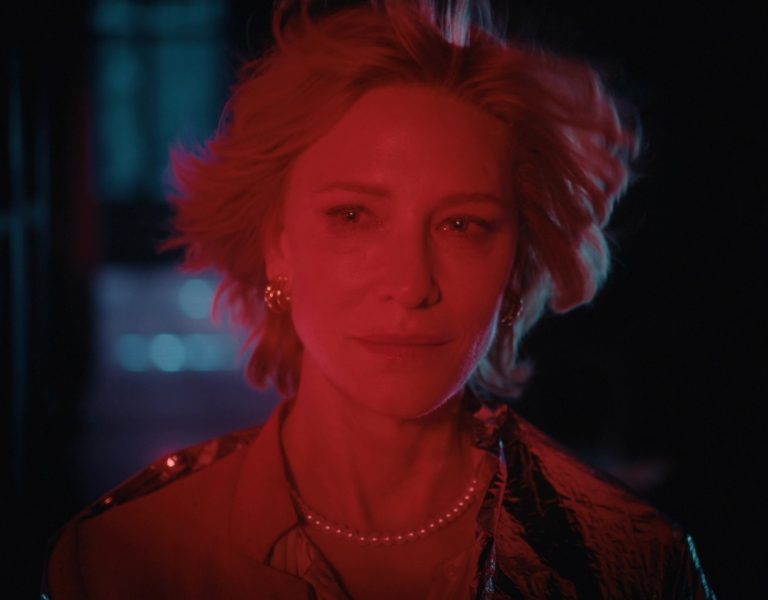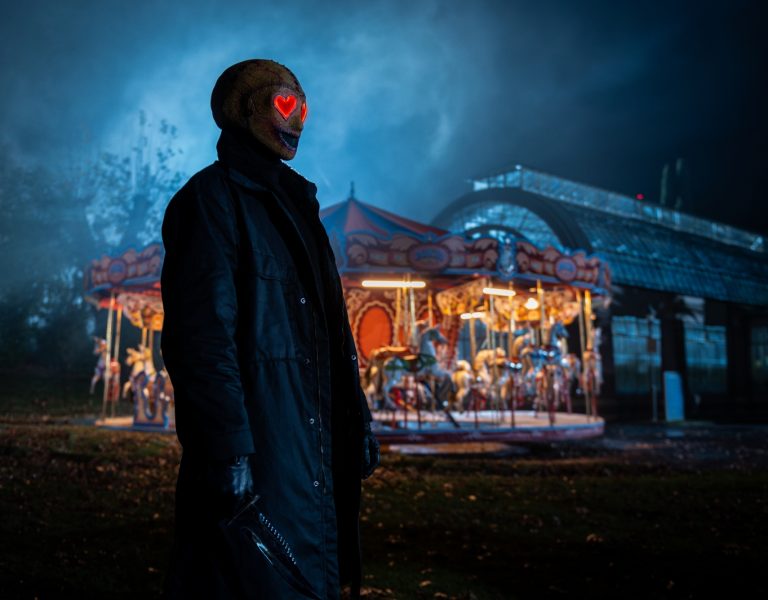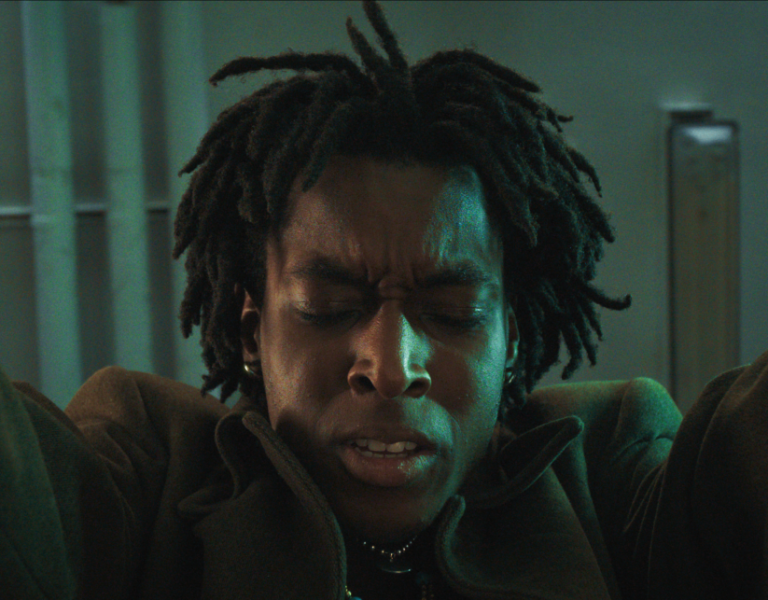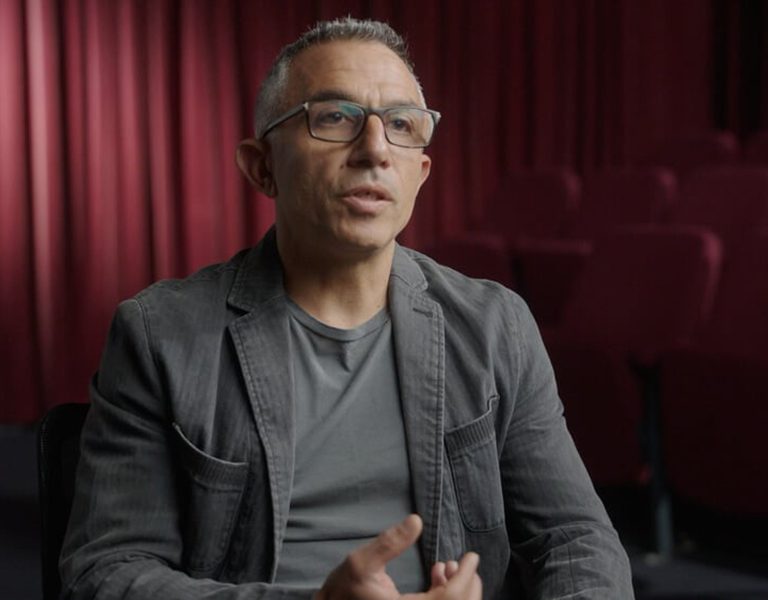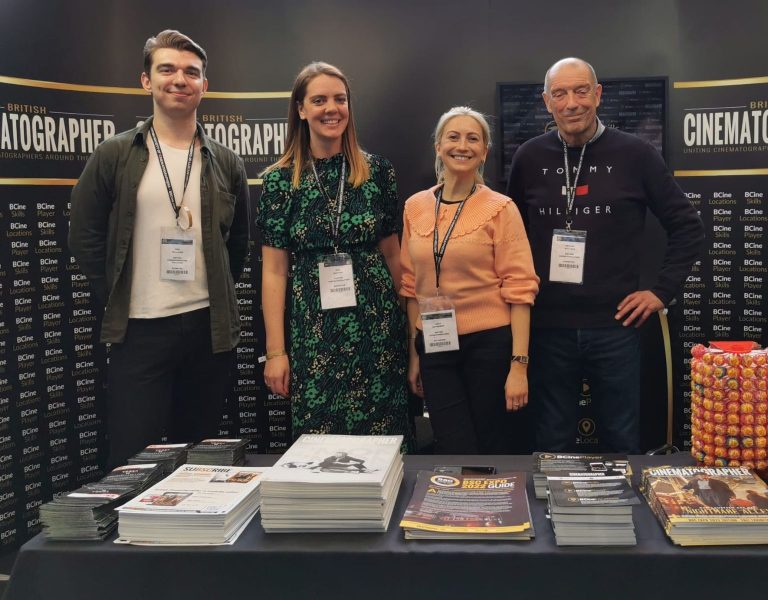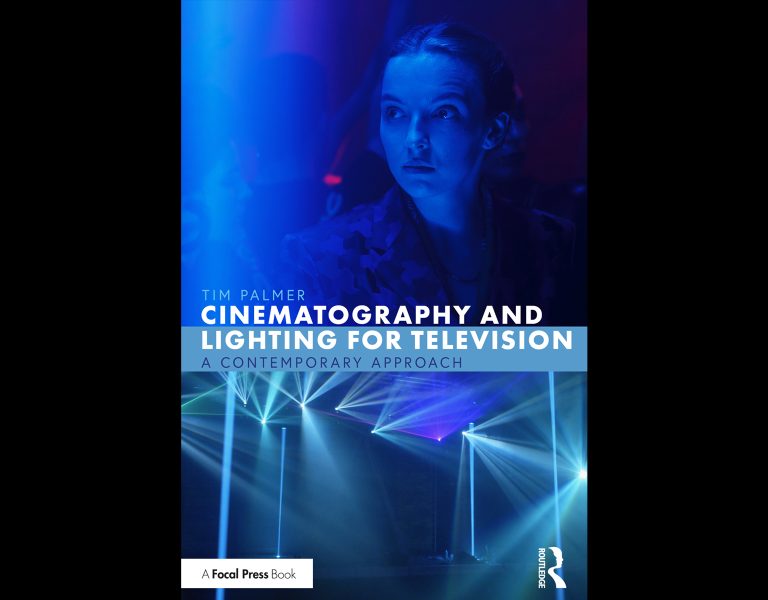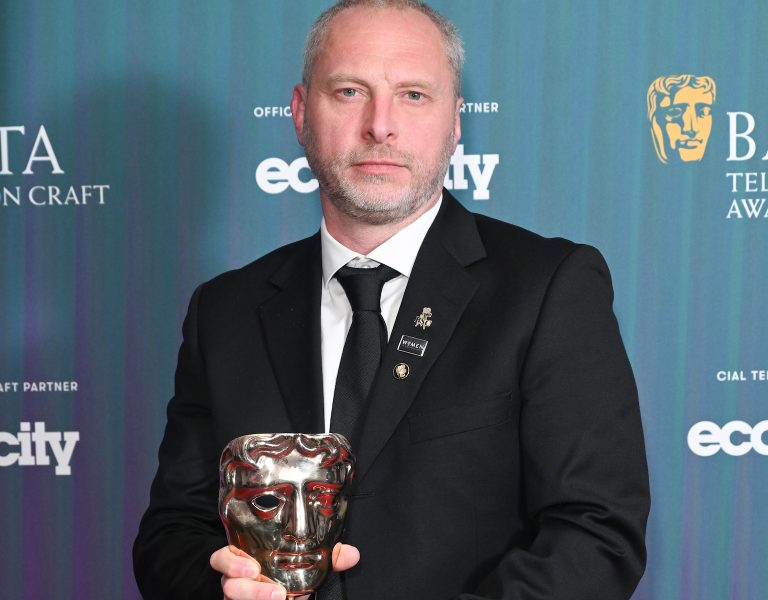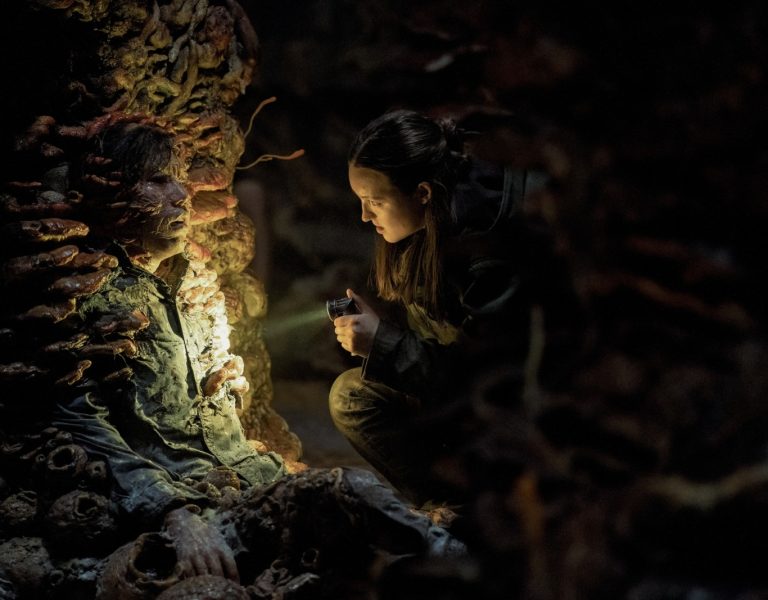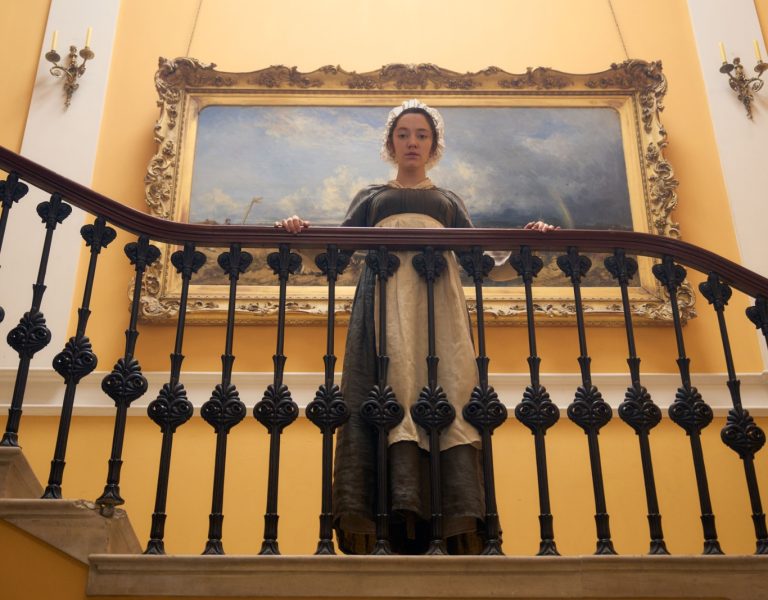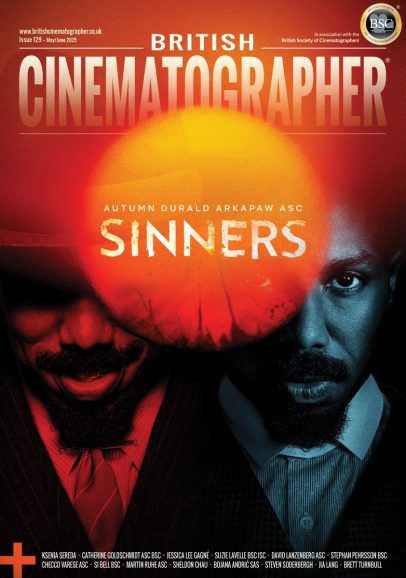Home » Features » Masterclass »
BULDING WORKS
Annika Summerson BSC crafts a distinctive visual style for the genre-blending detective-comedy Ludwig—using a Supertechno 75 Plus crane bold anamorphic choices and precise comedic framing.
Having collaborated with director Robbie McKillop on multiple projects, our established partnership allowed us to push the visual language of Ludwig with confidence. From the start, we knew the project needed a distinctive aesthetic that balanced its mystery drama and comedic elements seamlessly.
I opted for the Sony Venice paired with Hawk V-Lite anamorphic lenses, with the latter being a natural choice, having been used by both Robbie and me in the past and the time for testing was limited with my 15 days prep. Anamorphic was an important aesthetic decision; we were committed to shooting in a 2.39:1 aspect ratio to enhance the narrative’s blend of genres. This widescreen format also worked well for comedic timing, framing up for two-shots where the physical contrast between two characters could be seen side by side. Additionally, given the large ensemble cast, the anamorphic format helped frame multiple characters within the same shot effectively.
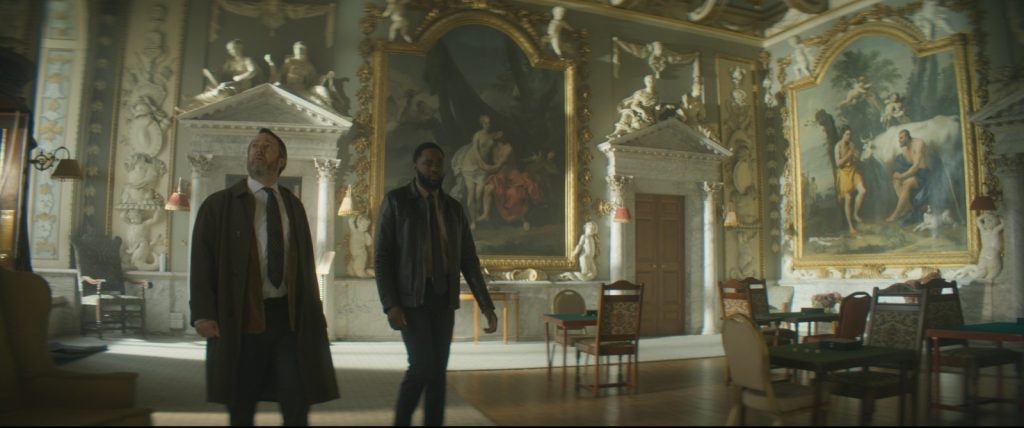
AIMING HIGH
One of the most exciting challenges was executing the opening sequence of the first episode. We had a rare chance to use a 75-foot Technocrane (Supertechno 75 Plus) available for a day from Mission Impossible, allowing us to capture one continuous shot. The introductory shot formed a carefully choreographed visual journey through a multi-storey office building just outside the City of London, filmed entirely from the outside, brilliantly executed by key grip Kylie Stubbs and his team.
The camera moves across the floors, following characters through the glass-walled building, revealing a man on the phone before rising to show his murder. This required meticulous planning, using an iPhone and a scaled model to map out movements. With only three to four hours at the location, we completed five takes and selected the best one.
Lighting this sequence was another challenge. Filming through glass at night was akin to shooting mirrors, making it difficult to manage reflections of the crane, nearby buildings, neon signs from the cityscape and even the crew. These issues were resolved in post-production with VFX by Jam VFX. The lighting approach relied heavily on practicals inside the building since we see everything, supplemented with strategically placed Astera Titan tubes, Astera NYX bulbs and Creamsource Vortex fixtures. We also coordinated light cues with character movements with the help of our excellent desk op Ziggy Jacobs.
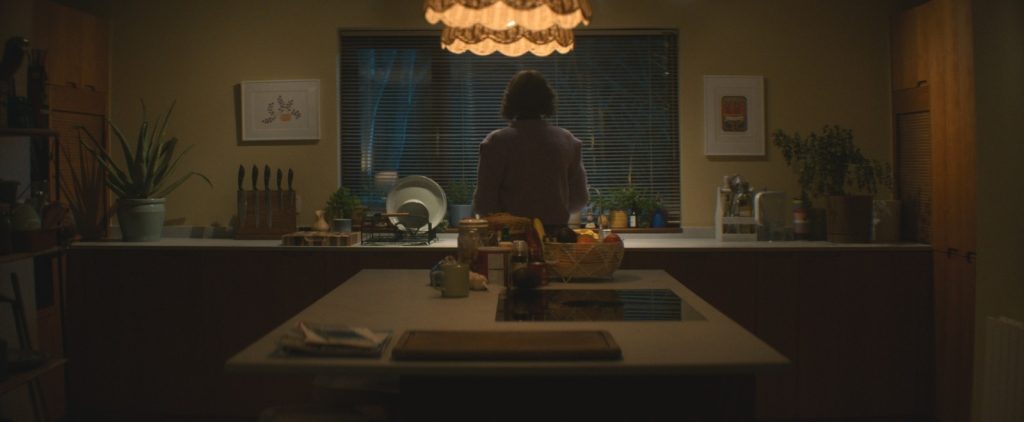
KILLER INSTINCT
For colour grading, I developed a series of custom LUTs with Jateel Patel at Harbor Picture Company, which I named after some of the Cluedo characters, I find it easier to remember the LUTs when they’re not a series of numbers. Simply explained, Colonel Mustard warmed up the highlights, Professor Plum gave us some purple in the shadows, Reverend Green had more blue and green hues and Mrs. White kept neutral tones crisp. After a few days of shooting I usually settle on one or two and in this case it was Reverend Green which became the main LUT for the remainder of the shoot. These LUTs helped maintain a consistent visual language across the series.
BUILDING A BUILDING
The police station, a key location, was designed in an empty space beneath our production office in Hillingdon. To avoid a stereotypical British police station look, we drew inspiration from Korean cinema, particularly Decision to Leave. Designer Melanie Allen and art director Neil McAllister worked closely with me, making colour choices alongside costume and makeup to create a cohesive palette.
A major lighting challenge in the police station was working with existing narrow office lights. The crew, led by Cullum Ross and Tony West, augmented them with cyan 15 gels and ND6, creating pockets of light for key areas. For David Mitchell’s character’s cubicle, custom-built lights with Astera Titan Tubes were installed. The in-house lighting was wired on three separate breakers, allowing us to selectively illuminate areas when switching between night and day scenes.
We also frosted all the windows and installed vertical blinds (we opted for a shade of blue rather then cream or white) to control the visibility of the outside world, as the station was meant to be on an upper floor, despite our location being on the ground level.
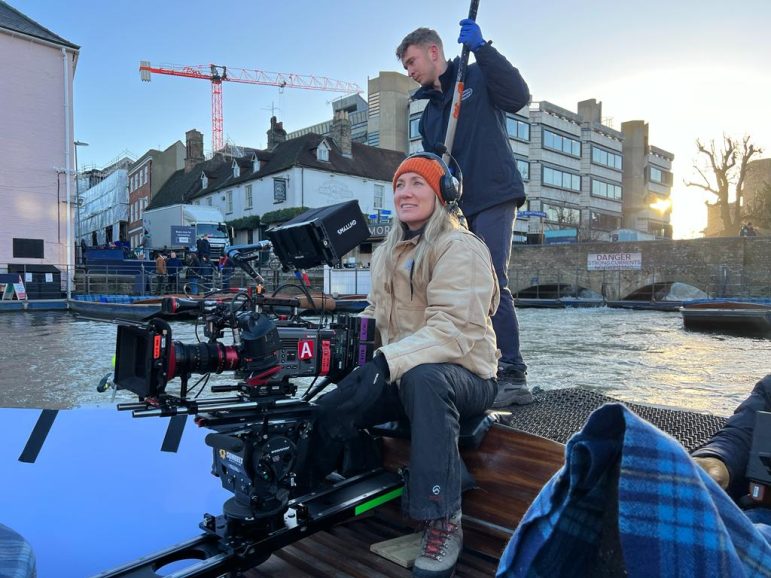
JUST FOR LAUGHS
Balancing the comedic and dramatic elements of the series was a unique learning experience. Although the show is classified as a drama, mystery and thriller, it is also a comedy—especially with David in the lead role – but we didn’t want to overplay it as such. This meant that lighting and framing had to complement the humour without undermining the tension.
Throughout the 36-day shoot, we employed a combination of single- and two-camera setups. I operated A camera and we also had Will Lyte on days with Steadicam and scenes with multiple suspects to efficiently capture coverage. Each episode revolved around a distinct central location—a church, a manor house, or an office building.
A key takeaway was refining the balance between comedy and drama in cinematography. Comedy requires precise timing in both performance and framing, knowing when to capture physicality or focus on intimacy. Close-ups, especially in scenes with David, added to the humour. This project pushed me to think critically about visual storytelling and how to shift between genres, sometimes within the same scene. It was a rewarding experience that made going to work enjoyable.
